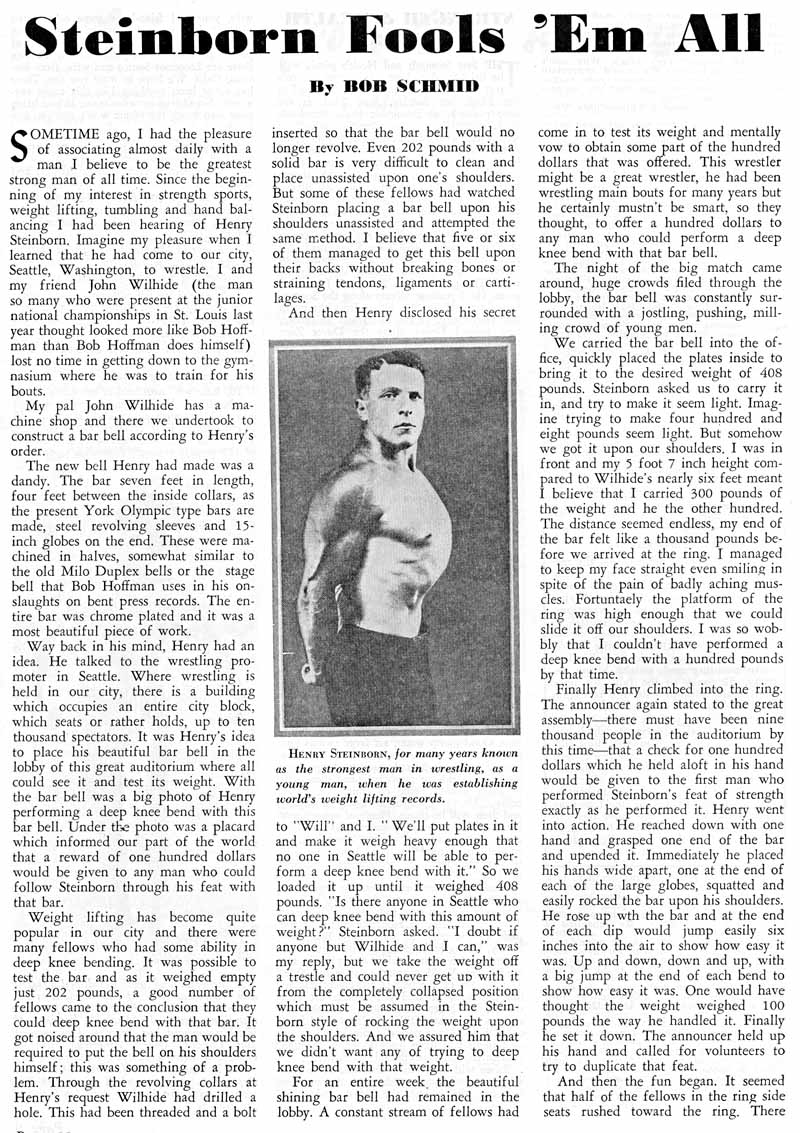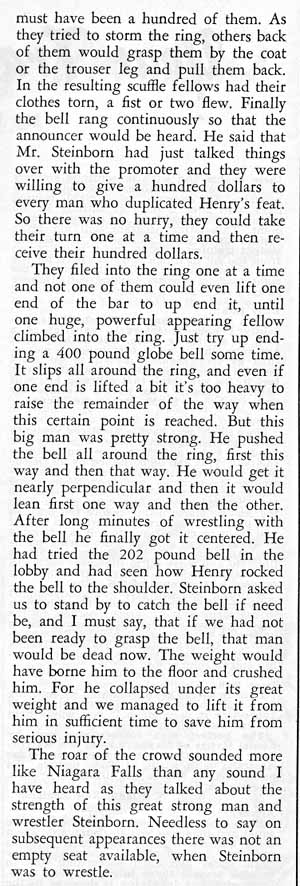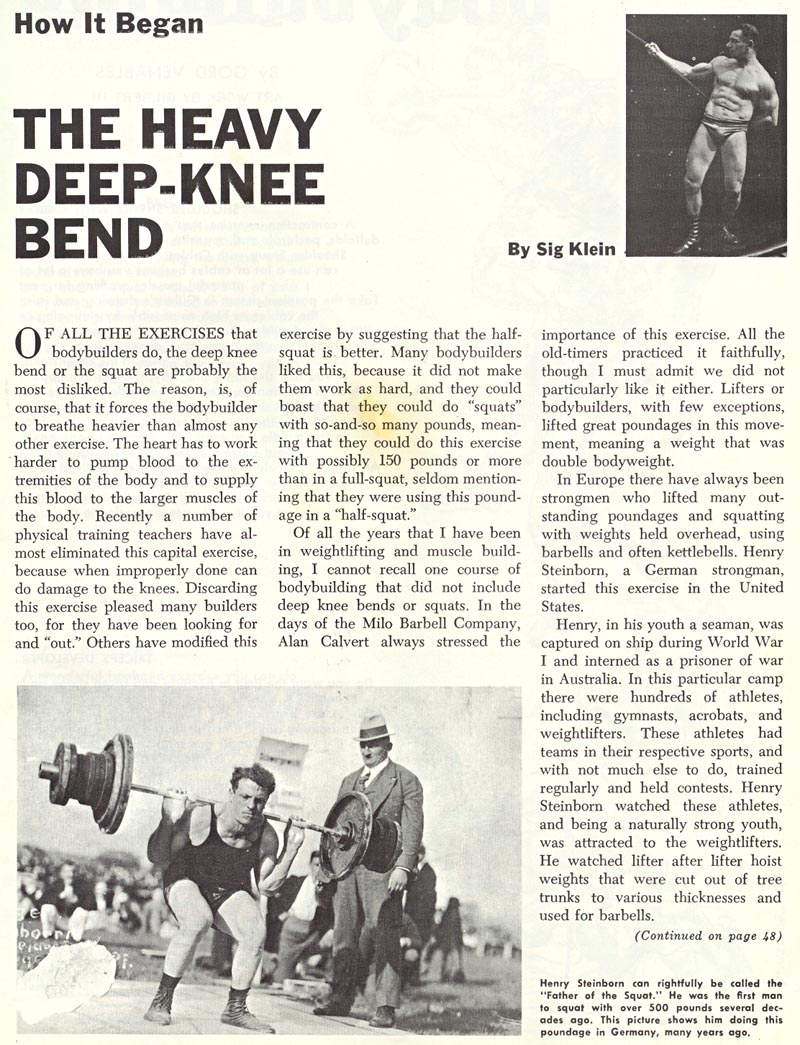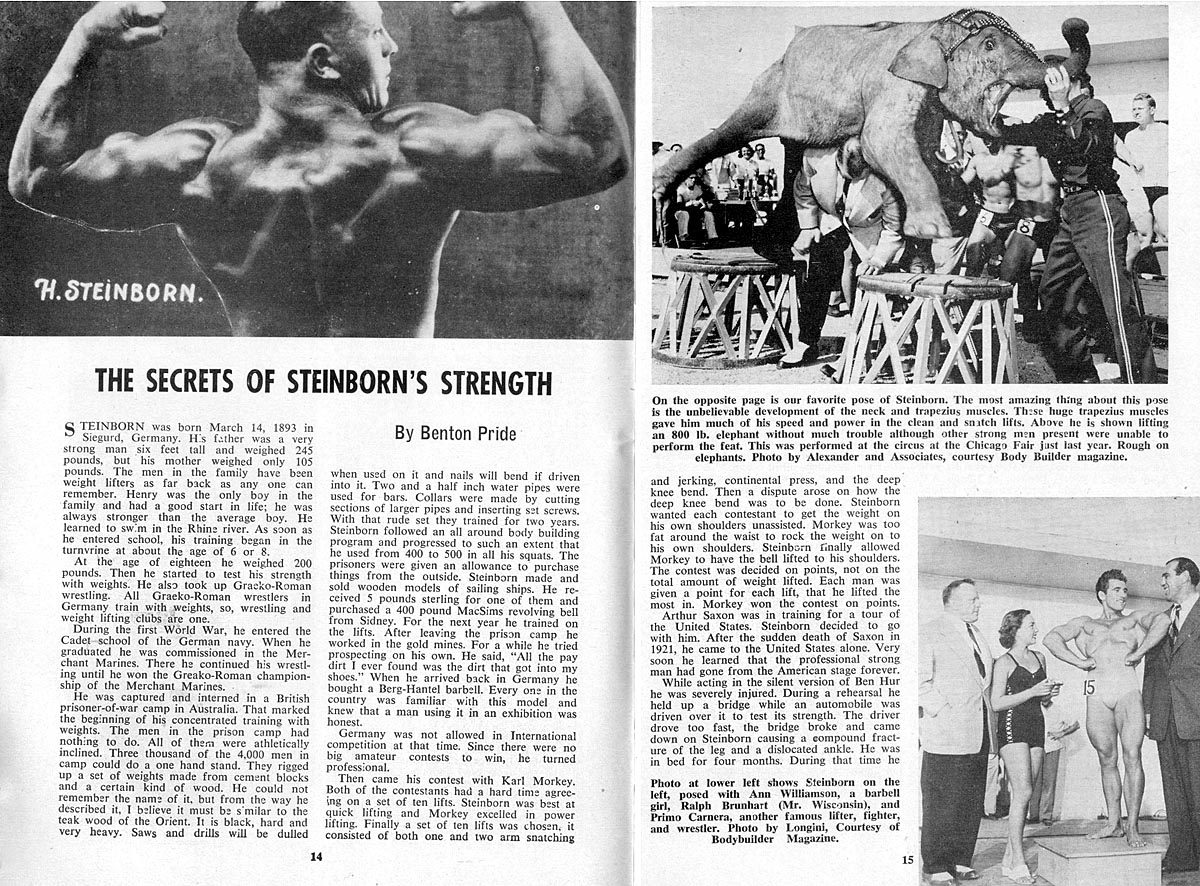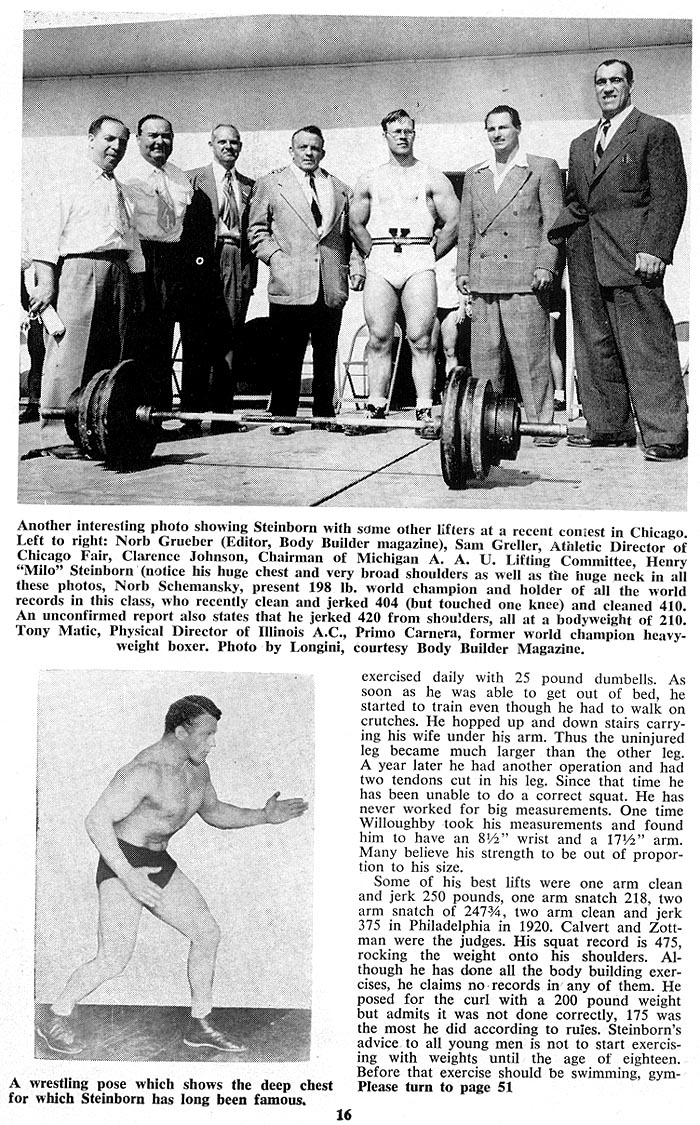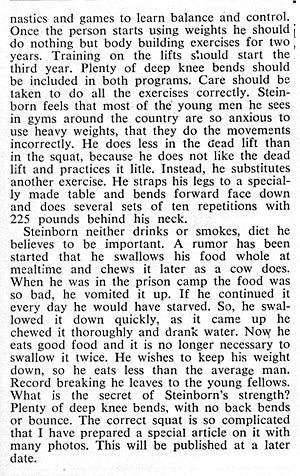Henry Steinborn - How It Began: The Legacy of the Heavy Deep-Knee Bend
By Sig Klein
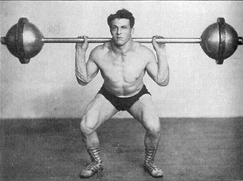
Henry "Milo" Steinborn (1893-1989) was a 5'8" 205 lb German who first started weightlifting as a military prisoner during World War I. It was during this time that he also became the first man to ever squat 500 lbs. After returning to Germany, Steinborn became his country's national weightlifting champion in 1920 and also set a world record in the squat of 553 lbs. This poundage would not be officially exceeded until the early 1950's by Douglas Hepburn. In 1921 he migrated to the United States and was largely responsible for popularizing the deep knee bend as a training adjunct to weightlifting. In addition, Steinborn was celebrated as both a professional wrestler and strongman until his retirement in 1963.
Of all the exercises in a bodybuilder's repertoire, the deep knee bend, commonly known as the squat, has often been met with disdain. Its demand for increased breath and exertion on the heart makes it one of the most challenging exercises. Over time, some physical training teachers have considered eliminating or modifying this exercise due to concerns about potential knee damage. Despite these reservations, the squat has endured as a fundamental and indispensable component of strength training.
Historical Perspectives: Throughout the evolution of weightlifting and muscle building, the deep knee bend or squat has remained a constant presence in training regimens. Even during the days of the Milo Barbell Company, renowned figures like Alan Calvert emphasized the crucial role of this exercise. Although not always beloved by practitioners, lifters and bodybuilders, with few exceptions, routinely incorporated squats into their routines, often lifting impressive poundages equivalent to double their body weight.
In Europe, strongmen have a history of performing remarkable feats in squatting, sometimes even holding weights overhead with barbells or kettlebells. Notably, German strongman Henry Steinborn introduced a distinctive variation to this exercise upon arriving in the United States. Steinborn, having been a seaman captured during World War I and interned in Australia, observed fellow prisoners who were athletes, including gymnasts, acrobats, and weightlifters. Witnessing their lifting contests and intrigued by their strength, Steinborn became drawn to the world of weightlifting.
Steinborn's Influence: In the prison camp, athletes fashioned weights from tree trunks and engaged in regular training and contests. Steinborn, naturally strong, watched as lifters hoisted weights carved from tree trunks of varying thicknesses. This unique form of squatting, with weights held overhead, became a hallmark of Steinborn's approach.
The history of the heavy deep-knee bend, or squat, is intertwined with the development of strength training and bodybuilding. Despite periodic attempts to discard or modify it, this exercise has endured as a testament to its effectiveness in building strength and muscle. From the Milo Barbell Company to the unique variations introduced by pioneers like Henry Steinborn, the squat remains an iconic and foundational element in the world of strength sports.
